How to Score a Twenty20 Hundred
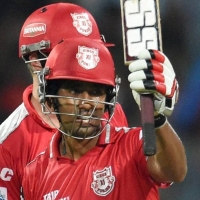 A strange thing happened in the final of IPL 7.
A strange thing happened in the final of IPL 7.
Batting first against KKR, King's XI Punjab had two in form overseas superstars ready to go in and start crashing boundaries. Maxwell looked primed. Miller was itching to biff it. Instead, a slight wicketkeeper with a traditional technique - best known for not being MS Dhoni - was sent in after 5 overs.
Wriddhiman Saha looks every bit the anti-T20 player. His batting was once said to have "the look of an accountant passing journal entries." Solid. Reliable. Safe.
He ignored this cliche about himself, and proceeded to smash a blistering Twenty20 hundred. Read on to find out how you can emulate this story in your Twenty20 cricket.
I thought it was worth taking a closer look at this innings. It's not only a joy to watch but there are also lessons we can learn:
- Scoring quickly with traditional technique but no great power.
- Batting under pressure.
- Playing to your strengths and targeting key bowlers.
Analyse the situation
Saha came in at 4, ahead of MVP Glenn Maxwell, with the score on 30-2 after 5 overs. It was slow going, so a more obvious tactic would be to send in "The Big Show" to cause some fireworks.
Except I think the KIXP analysts had done their homework. They knew that the biggest threat was in Kolkata's spin bowling of Narine, Chawla and Shakib Al Hasan.
They knew Saha was excellent against spin, as he had proved earlier in the competition also batting up the order.
He was send in to make sure the spin overs were destroyed and the threat nullified for Maxwell.
There's also a good chance Saha was riding high on his own confidence levels and felt like this was his moment. He had played regularly for the first time since 2010 and already nailed a couple of fifties. He had recently heard the news that he was to be reserve wicketkeeper for India on their next 2 tours.
He had his role clearly laid out.
He had his confidence.
He strode to the middle.
Keep your shape
Saha is a solid batsman with a technique that would make the MCC coaching book proud. So he started slowly, taking his time to get a feel for the situation with 6 in 9 balls. In that time we got to see some of the technical basics he stuck to.
As you can see below, he uses a high backlift that he picks up over off stump, against spinners his first movement is a forward press.
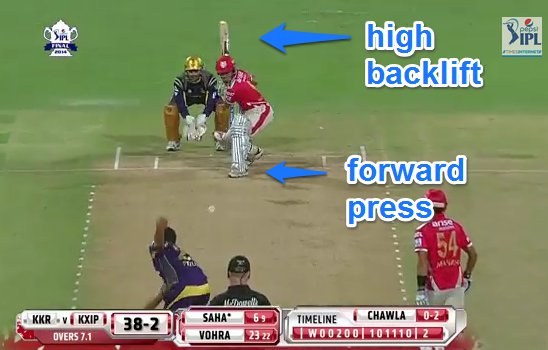
The backlift is a key point here. It allows him freedom to play classical and inventive shots. The height creates a pendulum effect, giving him more power and the position keeps the bat close to his body, but never behind it (where he would get blocked off). As a slight player, it gives him access to power and timing.
It's an important point towards the common coaching idea of "keeping your shape".
Use your classical shots
Saha quickly used this basic balanced position to attack. He used his feet early on to Chawla, to hit him classically through and over the off side. They were cricket shots that would have graced any length of match, executed with wristy power.
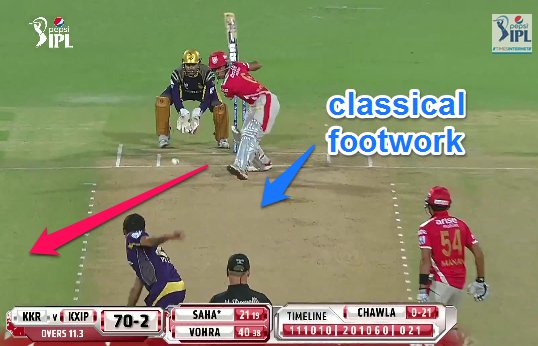
He took the Indian spinner for 16 in 5 balls.
But drives were not the only classical tool available to Saha.
He also played a "textbook" cut right in the middle of a leg side onslaught, simply to create issues for the KKR captain. At the time, Saha had been going leg side to spin and so the off side was exposed. He expertly put the ball in the gap and made Kolkata supporters wish they had another couple of fielders.
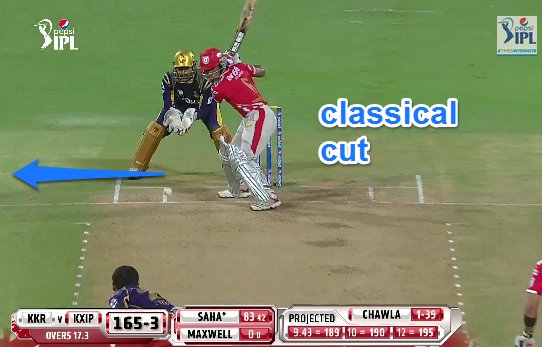
When the pace man Morkel decided to make Saha cower later in the game, he bowled a bouncer. A bouncer, we have been taught is a vicious weapon that spears fear and pain into subcontinental batters.
Saha hooked it for 6.
It wasn't the shot of a fearful man. It would have looked perfectly in place in any match in the last 50 years. Perhaps longer. He stepped inside it, spun on his toe and used the pace to clear the rope.

None of these shots were inventive. You can see them all in coaching manuals of yesteryear. Knowing the high standards that Indian coaches insist on technique, I'm sure Saha's cricket schoolmaster was nodding in approval.
He was doing the stuff that has worked for years, just at a faster rate.
Adapt your basics
The basics in place, Saha started adapting from early on, changing his trigger move to an exaggerated back and across movement against both spin and pace.
This movement has traditionally been coached against very quick bowling to give you more time to judge the line and length and play round the ground. Saha used it differently. He stepped way outside off stump, with the idea that he was going to pull the ball.
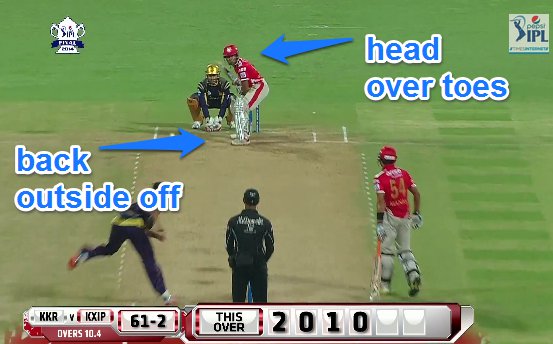
Importantly, he kept well balanced. You can see his head position is still over his feet. His backlift is still straight and his knees are bent putting himn in a powerful position to swing.
As he scored 47 runs in 16 balls between mid wicket and square leg, you can see the result of this tactic that combined balanced position with a premeditated shot.
In addition, he was quick to change his plan when the seamers were on.
Knowing he could use the pace of the ball to do the work, anything pitched up outside off stump was steered with an open face square on the off side.
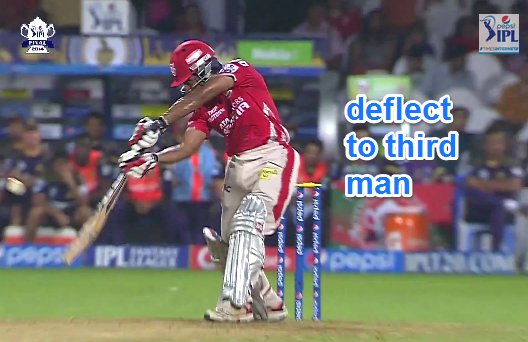
All he needed to do was make contact, beat the fielder and score.
The really clever part was his placement. Despite a field with 3 behind square on the off side he still put boundaries away, giving him a great wagon wheel all round the ground. That's the skill of a touch batsman (and it's something you can practice, don't think of it as natural talent.)
Go after the main threat
Sunil Narine had been exceptional in IPL 7 with his mystery spin, but Saha had a mission. Right from the first ball he faced his tactic was clear. Saha was going to continue to go back and across and hit Narine for as many boundaries over leg side as possible, no matter wher the spinner put the ball.
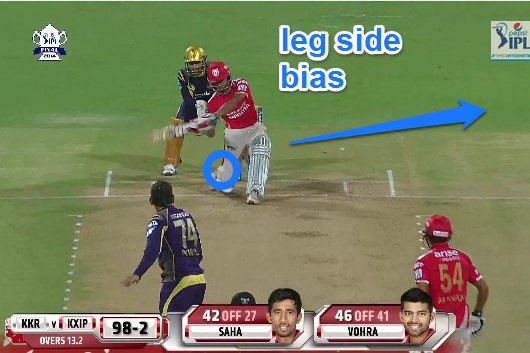
It worked. In 18 balls the batter took 34 and gave Narine his worst ever figures.
Admittedly, there was a stroke of luck when he was dropped on 60 during Narine's spell. But in T20 you have to make the most of your luck and have the mental skills to carry on with your plan.
This is where the mental game is important, even when you are swinging at everything. You cannot doubt your ability to do the required job or you will be filled with indecision. This is doubly true in a big final where the pressure is on with millions watching. Saha was perfectly focused on his goal, seeingly immune to the pressure.
By the way, that's also something you can practice.
With Narine nullified, the score flew up to 199.
It was just about the perfect Twenty20 hundred.
So my question to you is simple: how can you use this to inspire your play in shorter formats?
Here are some takeaway thoughts worth considering:
- If you are a touch player, how can you learn power shots that work?
- How can you develop the same confidence to attack the opposition's best bowler?
- What "world class basics" can you develop, and which traditional methods can you leave behind?
- Which types of bowling are you strongest against, and how can you manufacture facing the most balls against them?
I'd love to hear your thoughts, and how you are putting these ideas into action. Leave a comment, tweet me or add to the conversation on Google+
- Login to post comments


Comments
its great to b here..i appreciate your work